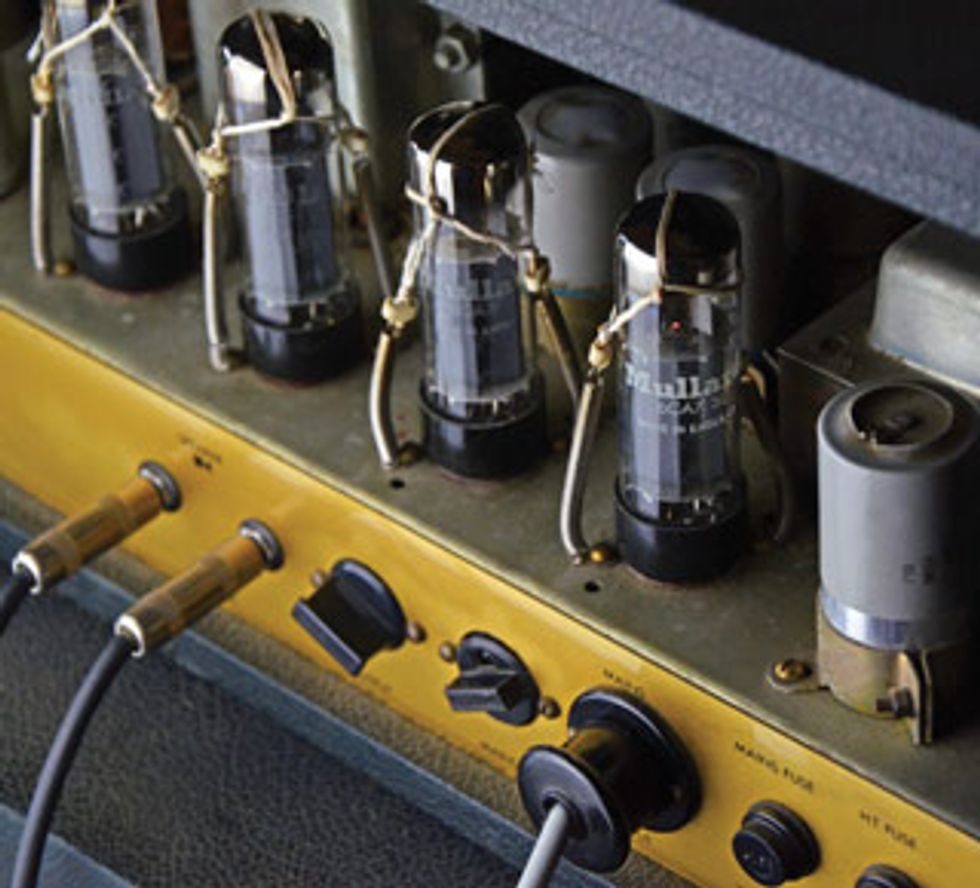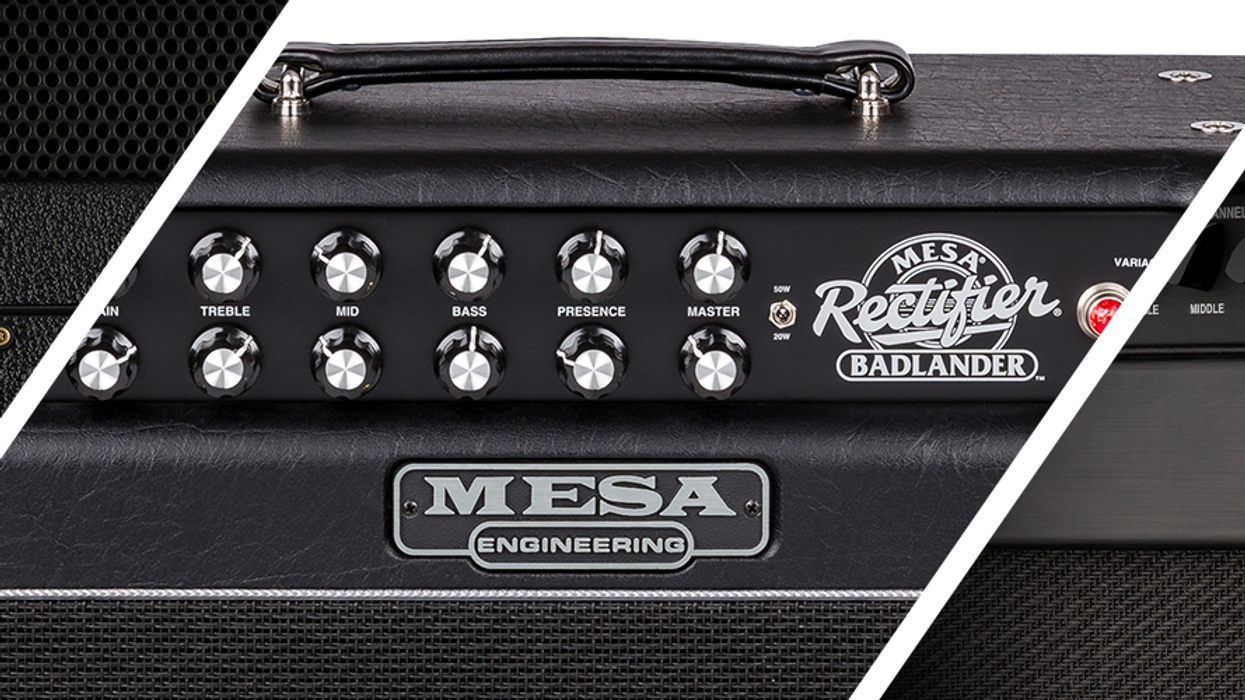
This vintage 100-watt Marshall head sports English-made Mullard EL34 power tubes. If you ever get to play a similar rig—or even own one—you’ll have the luxury of experiencing one of rock guitar’s most fundamental sounds.
Most everyone has heard the term “boutique” applied to musical gear. Though it once signified unique items made in low numbers by small shops or individual artists, it’s now merely a marketing term that even the biggest of the big throw around at will. The same goes with having a custom shop, which seems to be a required add-on for almost every factory.
Yet, above and well beyond the upper limits of custom, boutique, or limited editions, there exists an even more exclusive domain: luxury items. This stratum inhabited by items that few know—and even fewer own—is a business model that isn’t taught in school. Instead, it is driven by the relentless search for expression. I’d like to think of luxury as something so well made and rare, that it is passed down through generations with its relevance unscathed. One such luxury item is experience. And while it cannot be bought, it can be shared.
Not everyone has the luxury of years of experience to reflect upon when considering a DIY amplifier (or guitar) project. This was hammered home when a friend who wanted to build a tube amp for his 14-year-old son recently approached me for input. Although the father is both an audiophile and no stranger to fabricating bike and motorcycle parts, trying to decipher the guitar speak found on the various amp-kit websites was trying his patience. So, I suggested they bring a guitar over to my shop’s “tone pit” to audition some old-school amps. My thinking was that the first step should be determining the type of gain structure, and then deciding between the Euro-style EL output tubes and the ’murican-style 6V6/6L6 sounds. The reason for the hands-on test was because a guitar reacts differently with every amp—it was just a matter of finding a match.
My friend and his guitarist offspring arrived at the determined time with a gig bag in hand. The weapon of choice was a satin-black semi-hollow affair with two humbuckers and a fixed bridge—the kind of instrument you’d encounter in a mega guitar store or online catalog. It played well and the build quality was very tidy. And while I half expected the tuning to be dropped a few tones, it was in standard pitch. Also to my surprise, the young man’s repertoire included a host of classic-rock styles—he’d obviously raided his father’s music library. It was marvelous to see a young guitarist reaching back in time to learn what had come before he was even born. Zeppelin, Yes, and a slew of other bands were represented, along with some more current selections that fit the pattern as well.
When I asked him what kind of amp he was currently using, he explained that his rig was a modeling amp, which offered a wide variety of sounds. And from the way he said it, I sensed that he might not want to be locked down to a tube-fired, one-trick pony. After spending some time jumping from amp to amp, he began playing Hendrix’s “The Wind Cries Mary.” At that point, I suggested he plug my old Strat into a vintage 100-watt Marshall. Eureka! The synergy between guitar and amp elicited a saucer-eyed response from our young player, and his dad realized there was no turning back.
The point is not that modeling amps aren’t good, or that old stuff is better. It’s just that some things have to be experienced to be understood and believed. And it takes dedication and the will to seek out practical contact with the facts. Techniques and solutions that are a mystery to you now may become clearer through articles like this one, but they are not a substitute for real-world knowledge. Instead, they should serve as a guide that encourages you to try as many things as possible. Over time, you will achieve the luxury of knowledge—something that can’t be found in a boutique.
 Jol Dantzig is a
noted designer, builder,
and player who co-founded
Hamer Guitars,
one of the first boutique
guitar brands, in 1973.
Today, as the director of
Dantzig Guitar Design, he continues to
help define the art of custom guitar. To
learn more, visit guitardesigner.com.
Jol Dantzig is a
noted designer, builder,
and player who co-founded
Hamer Guitars,
one of the first boutique
guitar brands, in 1973.
Today, as the director of
Dantzig Guitar Design, he continues to
help define the art of custom guitar. To
learn more, visit guitardesigner.com.






![Rig Rundown: Russian Circles’ Mike Sullivan [2025]](https://www.premierguitar.com/media-library/youtube.jpg?id=62303631&width=1245&height=700&quality=70&coordinates=0%2C0%2C0%2C0)

















